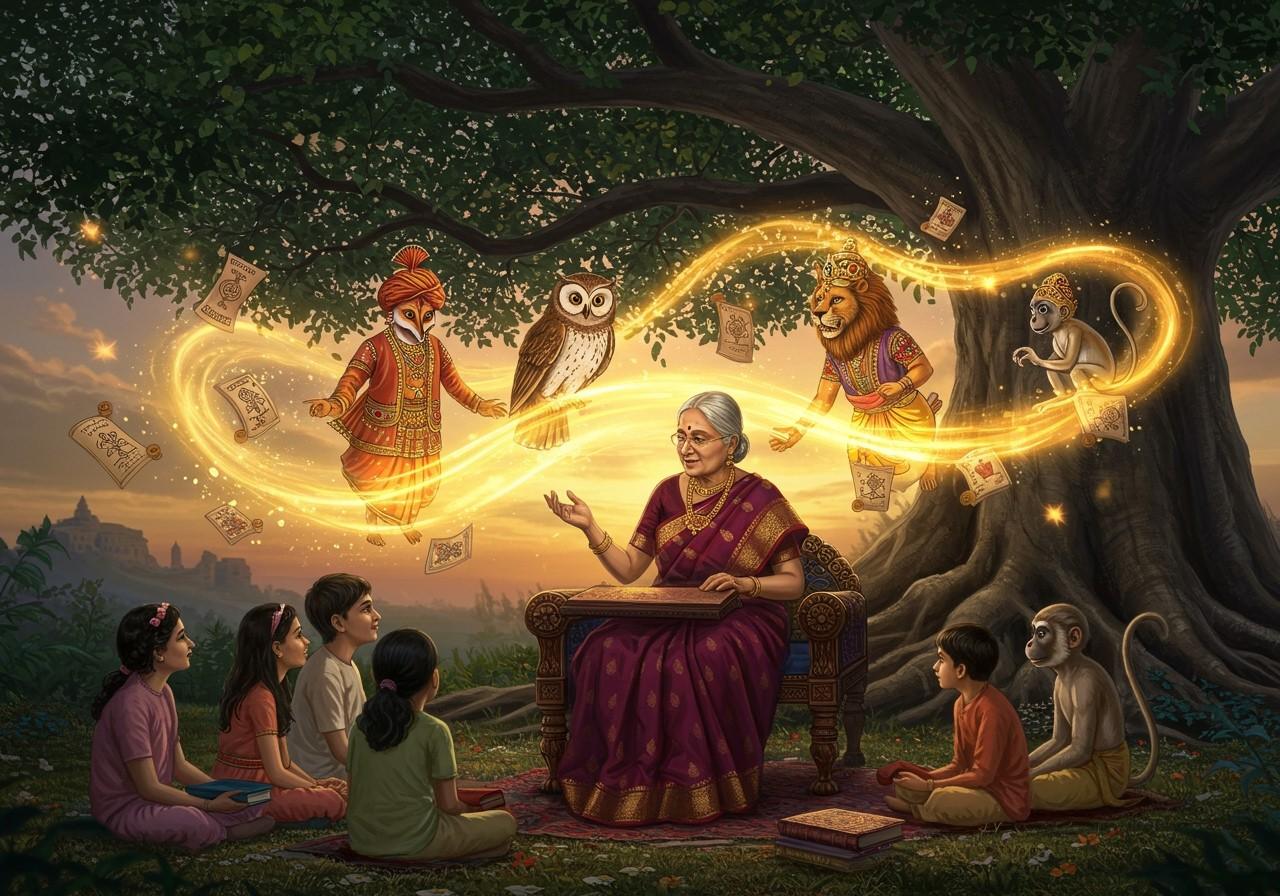
The Panchatantra stories, dating back over two millennia, continue to enchant readers with their timeless wisdom and moral lessons. These ancient Indian fables, originally written in Sanskrit, still resonate with modern audiences. This article explores the enduring appeal of the Panchatantra stories and their relevance in today’s world, offering insights into their origins, popularity among children, and availability in English translations.
Origins of Panchatantra Stories
The Panchatantra stories have a rich history, originating around 200 BCE. Vishnu Sharma penned these fables to educate young princes in ancient India. He employed animal characters and relatable scenarios to impart wisdom and morals. The stories are divided into five books, each focusing on themes like friendship, strategy, and human conduct. These tales aimed to entertain while educating about practical wisdom. They are also considered a treatise on political science and human conduct, originally written to instruct princes on aspects of kinghood.
Popularity Among Children
Panchatantra stories hold a special place in the hearts of children. The use of animals as characters makes these stories engaging and relatable. Simple yet profound moral lessons are easily grasped by young minds. Techniques like repetition and rhyming enhance memorization. Themes such as friendship, loyalty, and honesty resonate across cultures, fostering social and emotional learning. These stories are also used in early childhood education to teach ethical values and are adapted into comics, animations, and apps, keeping them relevant for today’s children.
Panchatantra Stories in English
Panchatantra stories have been translated into English and other languages to reach a global audience. Sir Thomas North’s first English translation in 1570 introduced these fables to the Western world. Numerous translations and adaptations have made these stories accessible to readers of all ages. Translating from Sanskrit while retaining the original charm is challenging but crucial for preserving cultural context. Panchatantra stories are now available in books, e-books, and audiobooks, promoting cross-cultural understanding and appreciation of Indian heritage.
Timeless Wisdom for Modern Life
The moral lessons from Panchatantra stories remain remarkably relevant in modern times. They offer insights into contemporary issues like teamwork, conflict resolution, and ethical decision-making. Specific stories can teach valuable lessons for business leadership and personal relationships. Reading these fables can provide stress relief and promote empathy. Panchatantra stories also foster critical thinking and problem-solving skills, aligning with the growing interest in ancient wisdom in the digital age.
Cultural Significance
Panchatantra stories hold immense cultural significance in Indian tradition. Passed down through generations, they form an integral part of Indian folklore. These stories play a role in festivals, rituals, and family gatherings. They have influenced other literary works and storytelling traditions both within India and globally. Panchatantra tales are depicted in various art forms, including paintings, sculptures, and theater. They promote moral values and ethical conduct in Indian society, instilling pride and a sense of identity in their rich literary heritage.
How Poojn.in Helps You Connect with Panchatantra’s Wisdom
At Poojn.in, India’s largest cultural goods and services store, we offer authentic spiritual and religious items that help you bring the timeless teachings of Panchatantra into your home. Our collection is designed to support families in sharing these important cultural stories with their children. Explore our offerings and connect with India’s rich storytelling heritage.
- Illustrated Panchatantra Books: High-quality printed versions in multiple Indian languages for children and adults. These beautifully illustrated books bring the stories to life, making them engaging for all ages. Find related books here.
- Panchatantra Story Cards: Beautifully designed cards featuring key moral lessons from the fables. These cards are a great way to introduce children to the stories and their ethical teachings, sparking conversations and learning. Explore related products.
- Educational Toys: Wooden puzzles and games based on Panchatantra characters. These interactive toys provide a fun and educational way for children to engage with the stories and characters. Discover other educational products.
Conclusion
The appeal of Panchatantra stories endures through the ages due to their timeless wisdom and moral lessons. These ancient fables, with their engaging animal characters and profound teachings, continue to captivate both children and adults. They offer practical insights relevant even in today’s fast-paced world. By translating these stories into English and other languages, and making them available in various formats, we ensure that their valuable lessons are accessible to a global audience. Embracing Panchatantra stories helps us stay connected to our rich cultural heritage while imparting essential values to future generations. As we navigate modern life, these tales remind us of the enduring power of wisdom, friendship, and ethical conduct.


